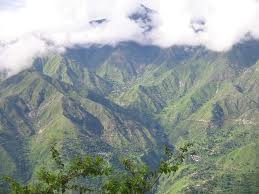visit to ranikhet

Ranikhet is located at 29.65°N 79.42°E.[4] It has an average elevation of 1,869 m (6,132 ft).The climate of the village is very cool. The cantonment is spread across two ridges, the first, called the Ranikhet ridge, is situated at an elevation of 5,983 ft (1,824 m) and the second, the Chaubattia ridge, is at an elevation of 6,942 ft (2,116 m).

Ranikhet literally means “Queen's Meadow”. It is believed that Queen Padmini of Kumaon was in love with this tiny hill paradise. Kind Sudhardev had to oblige her by building a palace here and named this place Ranikhet, the queen’s field. Though no trace of the palace can be found here today, but the place remained the same: bewitching, full of flowers, trees and green meadows in the midst of heavenly Himalayan surroundings. Lost into oblivion for long, the picturesque hill station was rediscovered by the Britishers. In 1869, the British established the headquarters of the Kumaon Regiment here and used the station as a retreat from the heat of the Indian summer. Ranikhet is a cantonment town and is the home for the Kumaon Regimental Centre & Naga Regiment and is maintained by the Indian Army. The main city of Ranikhet is fairly crowded but the military area offers serene environment.

Ranikhet becomes very cold in the winters and remains moderate in summers, and is best enjoyed from March to October. Ranikhet gets snowfall in the winter season, mainly in the months of December, January and February. But in the rest of the months the weather of Ranikhet remains pleasant.

The pine, oak, and deodar forests host an array of wildlife including leopard, leopard cat, mountain goat, barking deer, sambar, pine marten, Indian hare, red-faced monkey, jackal, langur, red fox, and porcupine
Jhula-Devi Temple
Jhula-Devi Temple is an 8th century goddess Durga temple which lies quiet close to Ranikhet Hill Station. It is believed that anybody who wishes for something in front of goddess Durga, his/her wishes are fulfilled. Lying close to Jhula-Devi Temple is temple dedicated to Lord Rama.

Ranikhet is located at 29.65°N 79.42°E.[4] It has an average elevation of 1,869 m (6,132 ft).The climate of the village is very cool. The cantonment is spread across two ridges, the first, called the Ranikhet ridge, is situated at an elevation of 5,983 ft (1,824 m) and the second, the Chaubattia ridge, is at an elevation of 6,942 ft (2,116 m).

Ranikhet literally means “Queen's Meadow”. It is believed that Queen Padmini of Kumaon was in love with this tiny hill paradise. Kind Sudhardev had to oblige her by building a palace here and named this place Ranikhet, the queen’s field. Though no trace of the palace can be found here today, but the place remained the same: bewitching, full of flowers, trees and green meadows in the midst of heavenly Himalayan surroundings. Lost into oblivion for long, the picturesque hill station was rediscovered by the Britishers. In 1869, the British established the headquarters of the Kumaon Regiment here and used the station as a retreat from the heat of the Indian summer. Ranikhet is a cantonment town and is the home for the Kumaon Regimental Centre & Naga Regiment and is maintained by the Indian Army. The main city of Ranikhet is fairly crowded but the military area offers serene environment.

Ranikhet becomes very cold in the winters and remains moderate in summers, and is best enjoyed from March to October. Ranikhet gets snowfall in the winter season, mainly in the months of December, January and February. But in the rest of the months the weather of Ranikhet remains pleasant.

The pine, oak, and deodar forests host an array of wildlife including leopard, leopard cat, mountain goat, barking deer, sambar, pine marten, Indian hare, red-faced monkey, jackal, langur, red fox, and porcupine
Jhula-Devi Temple
Jhula-Devi Temple is an 8th century goddess Durga temple which lies quiet close to Ranikhet Hill Station. It is believed that anybody who wishes for something in front of goddess Durga, his/her wishes are fulfilled. Lying close to Jhula-Devi Temple is temple dedicated to Lord Rama.
No comments:
Post a Comment